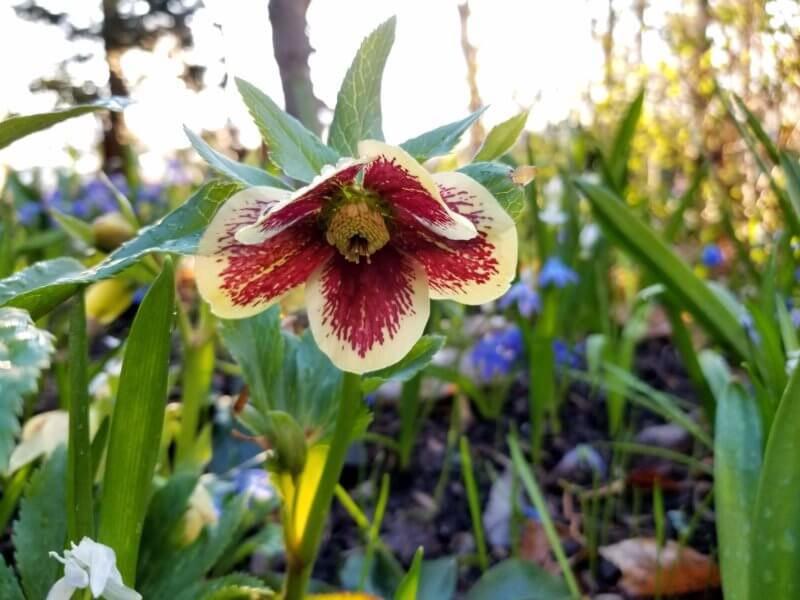Hellebores bring a stunning display and herald spring
For a stunning display of blooms in early spring, most New England gardens would benefit from the addition of a remarkable perennial — the hellebore.
Among the first plants to herald spring, hellebores have gained huge popularity due to their many laudable qualities.
Hellebores are non-invasive evergreen perennials coveted for their resistance to cold and their abundant, durable and colorful blooms. They can thrive for over two decades and are undeterred by hungry deer and rabbits.

Helleborus (hellebore) is a genus of about 20 species of extremely cold-hardy, herbaceous perennials in the Ranunculaceae (buttercup) family. This plant is native to mountainous regions of Southern and Central Europe from the eastern Alps through Germany, Austria, Switzerland and Italy to the northern Balkans.
One particular species, Helleborus orientalis, is commonly known as the Lenten rose because it blooms during the weeks leading up to the Easter holiday. Helleborus orientalis cross-pollinates well with other species of hellebores, resulting in stunning specimens.
During the 1980s and 1990s, devoted German and British breeders used Helleborus orientalis to develop many stunning cultivars. These hybrid hellebores featured extraordinary colors from whites and greens to pinks and dark purples in single or double blossoms.
Hellebores have a relatively young history in the American garden. In the mid-1990s, American collectors caught the hellebore fever and gained national and international recognition for breeding exceptional cultivars.
Countless selections of hybrid hellebores are available to consumers, though they can be difficult to identify because many cultivars were incorrectly classified in the trade. This dilemma led to their reclassification as Helleborus x hybridus (where the × indicates that species have been crossed). Their former name, Helleborus orientalis hybridus, erroneously referred to a naturally occurring variety.
Hybrid hellebores grow into mounds up to 24 inches tall and 30 inches wide. Although their foliage varies in shape and color, most share glossy palmate leaves with serrated leaflets.
Their stunning, long-lived blooms are not flowers, but large colorful sepals that remain on the stems until the seeds mature. Although the blooms change color following pollination, they do not lose their aesthetic appeal.
Hybrid hellebores are easy to grow in U.S. Department of Agriculture plant hardiness zones 4-9. They thrive in partial shade in moist but well-drained soil. In New England, they can grow in full sun provided they receive sufficient moisture.
Hellebores tolerate most soils and will benefit from a yearly application of compost, preferably in the spring. You can plant them any time from early spring through early fall to allow ample time for strong root growth.
When planting, take care to keep the crown at soil level by digging a hole as deep as the pot they came in. Burying the crown too deep will discourage blooms.
Loosen the root ball if needed, level the plant in the hole and water the roots. Continue to cover the roots with soil, taking care not to bury the crown. If you plan to spread mulch, be sure to keep it away from the crown.
If your hellebore is established, consider pruning the previous year’s foliage to keep your plant looking fresh and to prevent the spread of diseases from the old leaves.
Creating a hybrid cultivar is a meticulous, time-consuming process that involves a lot of trial and error. Additionally, when grown from seeds a plant may take five to six years to reach marketable size. These factors have prompted many breeders to patent their cultivars and charge growers royalties and licensing fees, ultimately resulting in high consumer prices.
Although hellebores are pricey, don’t let this intimidate you from investing in such robust plants, especially ones that will take center stage in your shade garden for the next 20 years.
Nadie VanZandt is a University of Vermont extension master gardener from Panton.

